The Truth About Foam Rolling
And Why It's Not Enough for Your IT Band Issues
3 Key Takeaways
1. Foam Rolling Provides Temporary Relief, Not a Long-Term Solution
2. Strength Training and Running Technique Are Essential for Addressing IT Band Pain
3. Advanced Regenerative Therapies Offer Long-Lasting Solutions
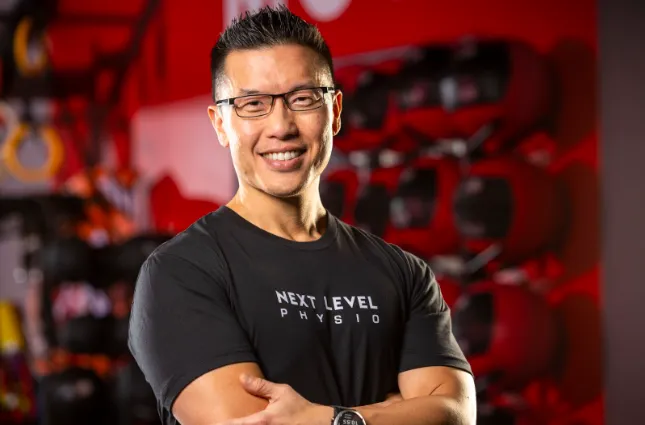
By Dr. Jerry Yoo, Founder Next Level Physio
7 min read
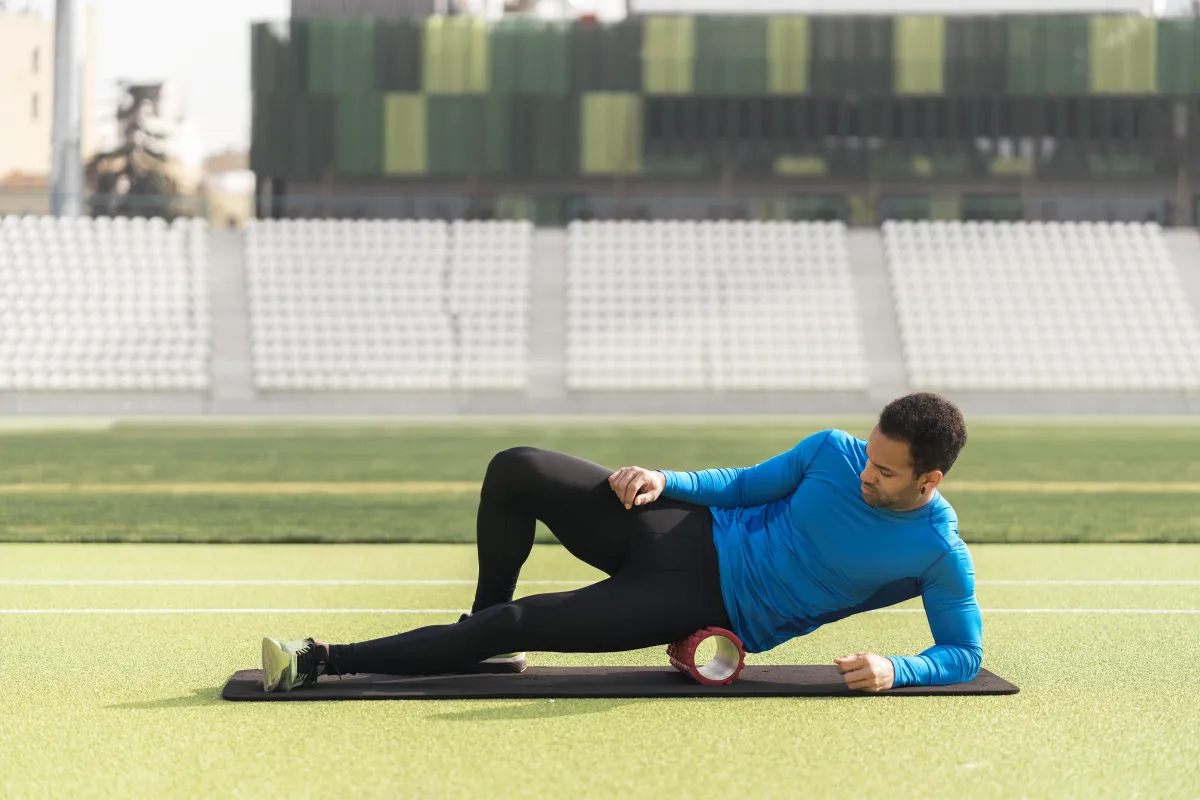
Happy Labor Day!
As we take a well-deserved break from the daily grind, it’s a great time to reflect on how we care for our bodies – especially if you’ve been putting in work on the pavement or in the gym. While we celebrate the hard work that keeps us moving forward, let's also talk about something that’s often misunderstood in recovery: foam rolling.
After 25 years in practice, I’ve seen countless fitness trends come and go. Yet, the foam roller has somehow stood the test of time. It’s a warm-up and recovery tool loved by many athletes, myself included, and for good reason.
Foam rolling can help relieve some muscle tightness and improve flexibility – temporarily. But when it comes to long-term solutions, especially for issues like IT band syndrome, foam rolling falls short.
Let’s get real about what foam rolling can and can’t do, and why the advanced regenerative therapies out there – Shockwave Therapy (EPAT), Blood Flow Restriction (BFR), and e-Dry Needling (e-DN) – are your best bet for overcoming IT band issues and enhancing performance.
Why Foam Rolling Isn’t Enough for IT Band Pain
The IT band is a thick, fibrous tissue that runs along the outside of your thigh, from your hip to your knee. When it becomes irritated or inflamed – often due to poor running technique, muscle imbalances, or overuse – it can cause pain, commonly known as IT band syndrome.
Here’s where the myth of foam rolling comes into play. Many runners believe that rolling out their IT band will somehow “loosen” it or fix the problem. But here’s the truth:
Foam rolling does not and cannot "stretch" your IT band.
The IT band is not a muscle; it’s a tough, non-contractile tissue. No matter how much pressure you apply with a foam roller, you’re not going to change its length or flexibility. What foam rolling can do is temporarily alleviate some tightness in the muscles around your IT band, such as your quads, hamstrings, or glutes. But this is a temporary solution – the relief will wear off quickly, and the underlying problem remains.
So, what should you do instead?
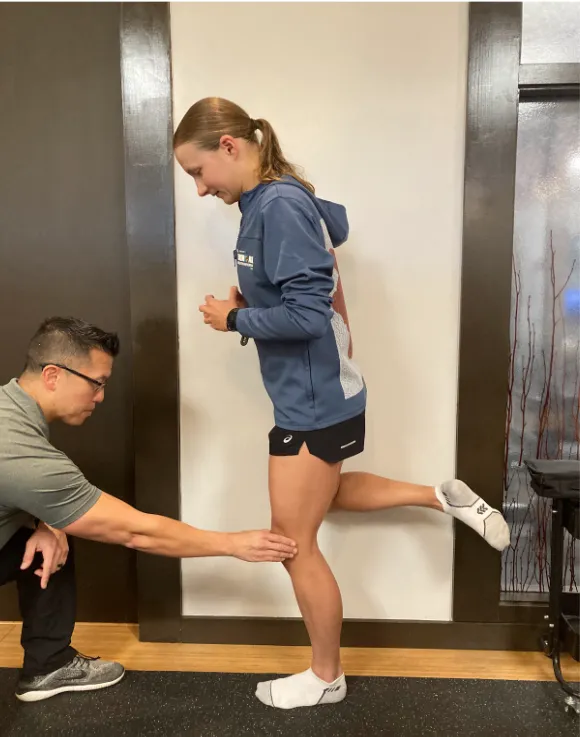
What Really Works for IT Band Syndrome
Addressing IT band pain requires a more comprehensive approach, focusing on the root cause of the issue rather than just chasing symptoms. Here’s what you need:
1. Strengthening the Glutes
One of the primary reasons runners experience IT band issues is due to weak glutes, particularly the gluteus medius.
This muscle helps stabilize your pelvis during running, and when it’s not doing its job, other muscles (like the quads and IT band) have to compensate, leading to overuse and irritation.
Incorporating exercises like isometric hip abduction or kickstand RDL can help strengthen your glutes and provide better pelvic stability, taking the load off your IT band.
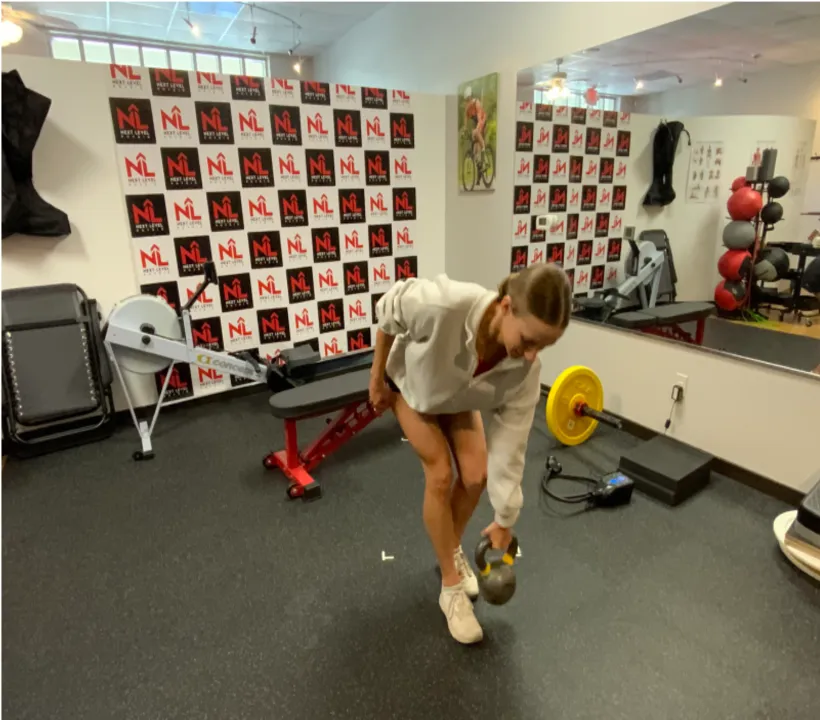

2. Running Technique
Poor running form can exacerbate IT band problems. Over-striding, crossing your feet over midline (also known as "running on a tightrope" or “cross-over pattern”), or a lack of hip stability can all put extra stress on your IT band.
Working with a running coach or physical therapist to analyze and improve your form can be a game changer in preventing IT band issues.
Improving your cadence (steps per minute), increasing core stability, and learning to properly engage your glutes while running will all help reduce strain on your IT band.
3. Advanced Regenerative Therapies - The Real Secret to Long-Term Solutions
Now, while strength training and technique adjustments are critical, they’re not the only tools in your toolkit. If you’re struggling with IT band syndrome – or any nagging muscle or tendon issue – we’ve got something that blows foam rolling out of the water: our advanced regenerative therapies.
Here’s how each of these modalities can help you get better results, faster:
Unlike foam rolling, which only affects the surface muscles, Shockwave Therapy targets the deeper layers of your connective tissues, stimulating healing at the cellular level.
Shockwave sends sound waves into your muscles, ligaments, tissue, or tendons, promoting increased blood flow, reducing inflammation, and breaking up scar tissue.
This means real, long-term relief from IT band pain – not just temporary relief from muscle tightness.

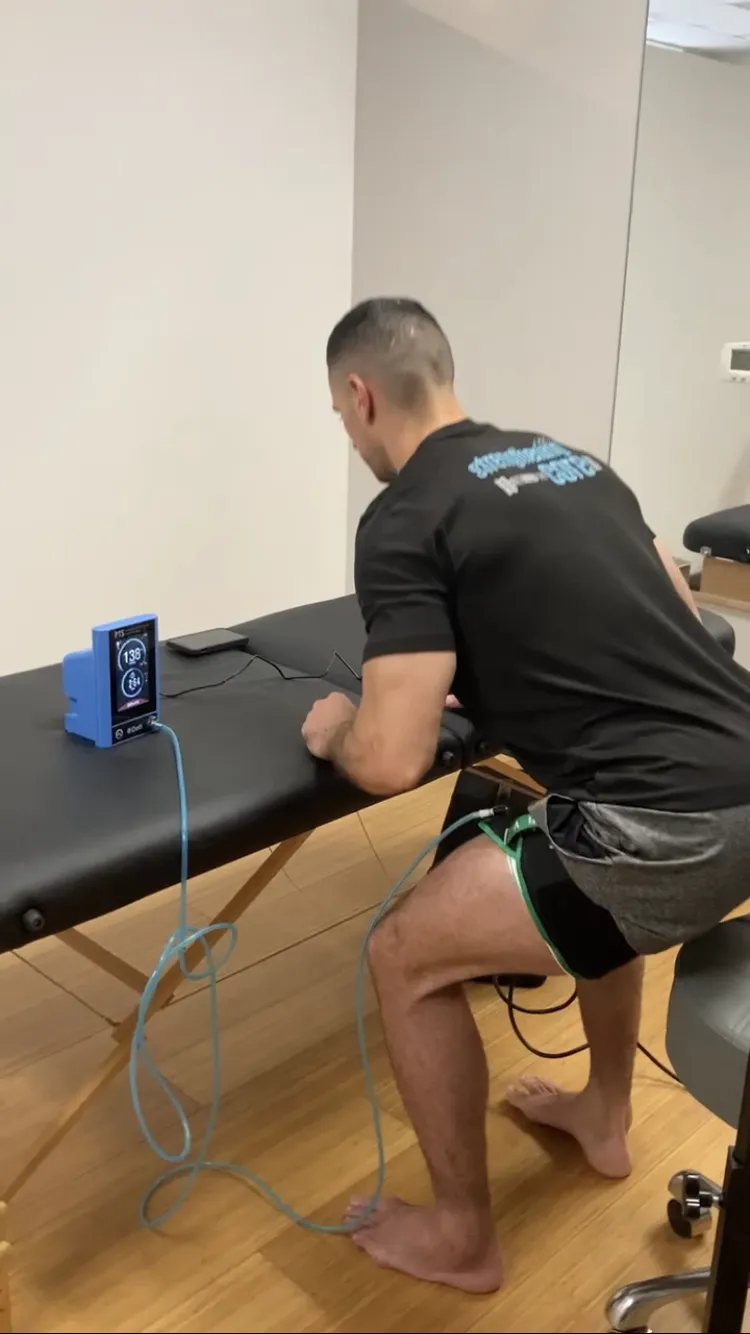
Blood Flow Restriction (BFR) Therapy
BFR is a powerful tool for building muscle strength without putting excessive strain on your joints or tissues.
By restricting blood flow to the working muscle during low-intensity exercises, BFR creates a hypoxic environment that stimulates muscle growth and strength gains – even at low weights.
This is especially helpful for strengthening your glutes, quads, and hamstrings without aggravating your IT band.
e-Dry Needling goes where foam rolling can’t – deep into the muscle tissue. By targeting trigger points and areas of muscle tightness, dry needling releases tension and restores normal muscle function.
With electrical stimulation (e-DN), we can accelerate this process, improving muscle activation and reducing pain more effectively than foam rolling ever could.
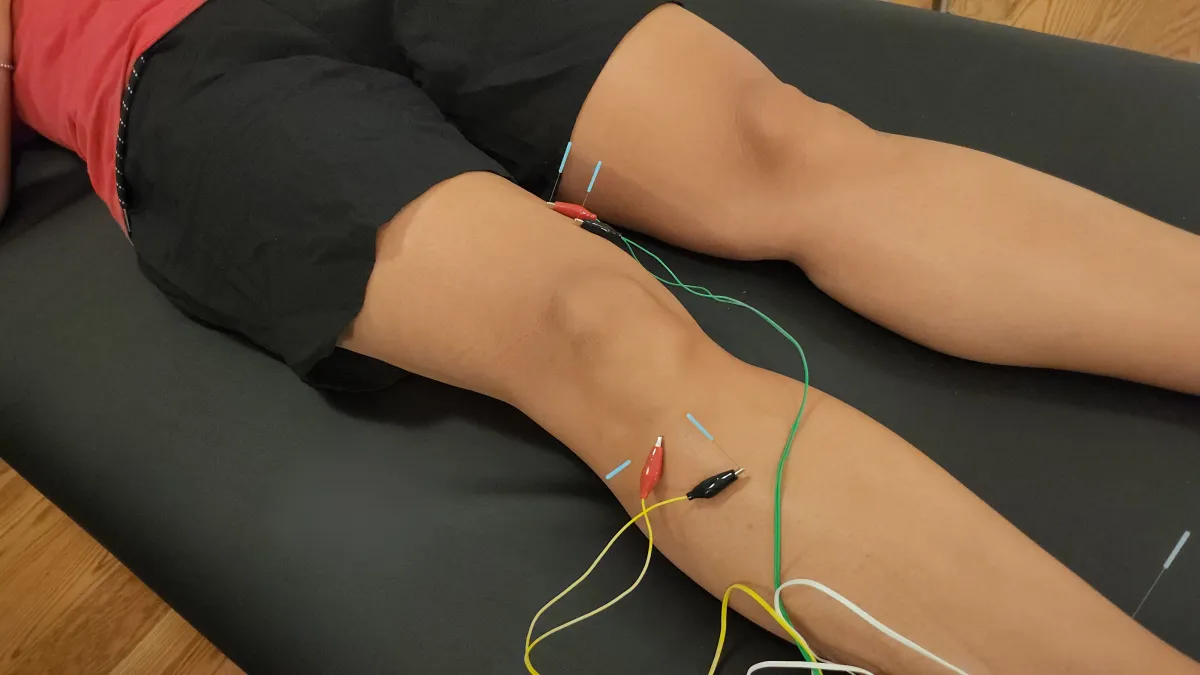
While our regenerative therapies provide quick results and long-term relief, we also use them to enhance your performance and recovery by targeting the root cause of muscle imbalances and tissue dysfunction.
Here’s why we believe these therapies are the “secret sauce” for runners and hybrid athletes:
Lasting Results: Unlike foam rolling, which only provides short-term benefits, Shockwave Therapy, BFR, and e-DN help improve tissue health and function, leading to long-lasting relief.
Faster Recovery: By promoting cellular repair and reducing inflammation, our therapies help you recover faster and get back to running stronger.
Performance Boost: These therapies aren’t just for treating injuries – they’re for optimizing performance, keeping your muscles functioning at their best so you can run faster, longer, and pain-free.
Why Our Approach Beats the Foam Roller
While foam rolling can be a useful tool for temporary relief, it simply doesn’t address the deeper issues causing IT band syndrome. Our 3 step MEI Method helps us create the right roadmap to get runners back on the asphalt and trails.
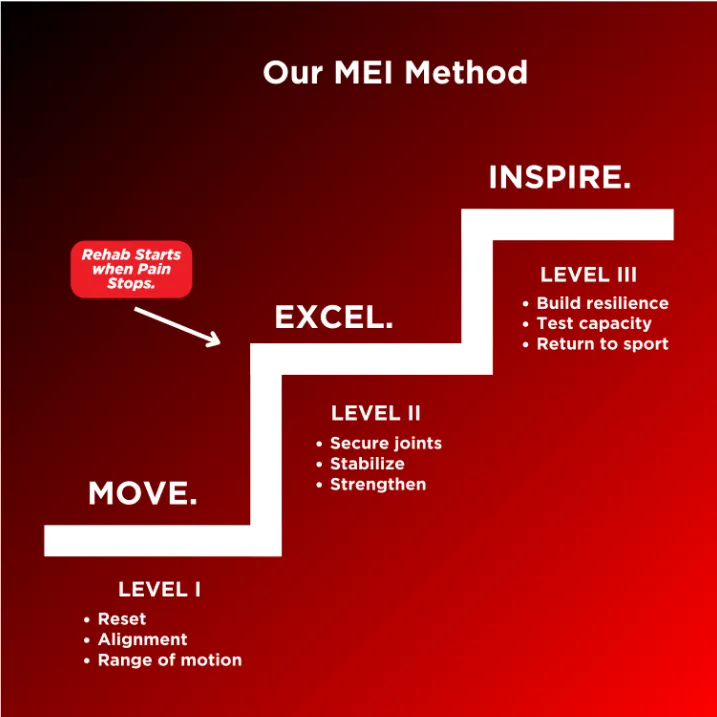
At Next Level Physio, we have developed a groundbreaking 3-step process, our Move.Excel.Inspire Method, designed to get our runners and hybrid athletes feeling better again in as few as three to six visits.
Our approach is comprehensive, personalized, and rooted in cutting-edge science and technology.
Root cause vs. Symptoms
Our priority is to identify and address two diagnoses in physical therapy-
1. the symptoms you came in with
2. the root cause of why they happened in the first place
If we just focus on getting you out of pain (symptoms), we’re just chasing pain and your results will be short lived at best.
Once we solve for the root cause, symptoms often steadily decrease.
The Bottom Line
If you’re dealing with IT band issues, foam rolling isn’t going to cut it. You need a comprehensive approach that includes strength training, proper running technique, and advanced regenerative therapies like Shockwave, BFR, and e-Dry Needling. These therapies are the real secret to not only fixing IT band syndrome but also improving your overall running performance.
Ready to leave foam rolling in the dust and experience real results? Contact us at Next Level Physio to book your Free Runners’ Assessment, and let’s get you running strong and pain-free for the fall race season!
References
Pagaduan, J. C., Chang, S.-Y., & Chang, N.-J. (2022). Chronic effects of foam rolling on flexibility and performance: A systematic review of randomized controlled trials. International Journal of Environmental Research and Public Health, 19(7), 4315. https://doi.org/10.3390/ijerph19074315
Dr. Jerry Yoo is the Founder of Next Level Physio.
He has worked with runners and triathletes for over 25 years, and is a clinical running research partner with Rutgers University, Dr. Jerry is an expert at helping athletic men and women over 30 get back to what they love to do.
He can be reached directly at
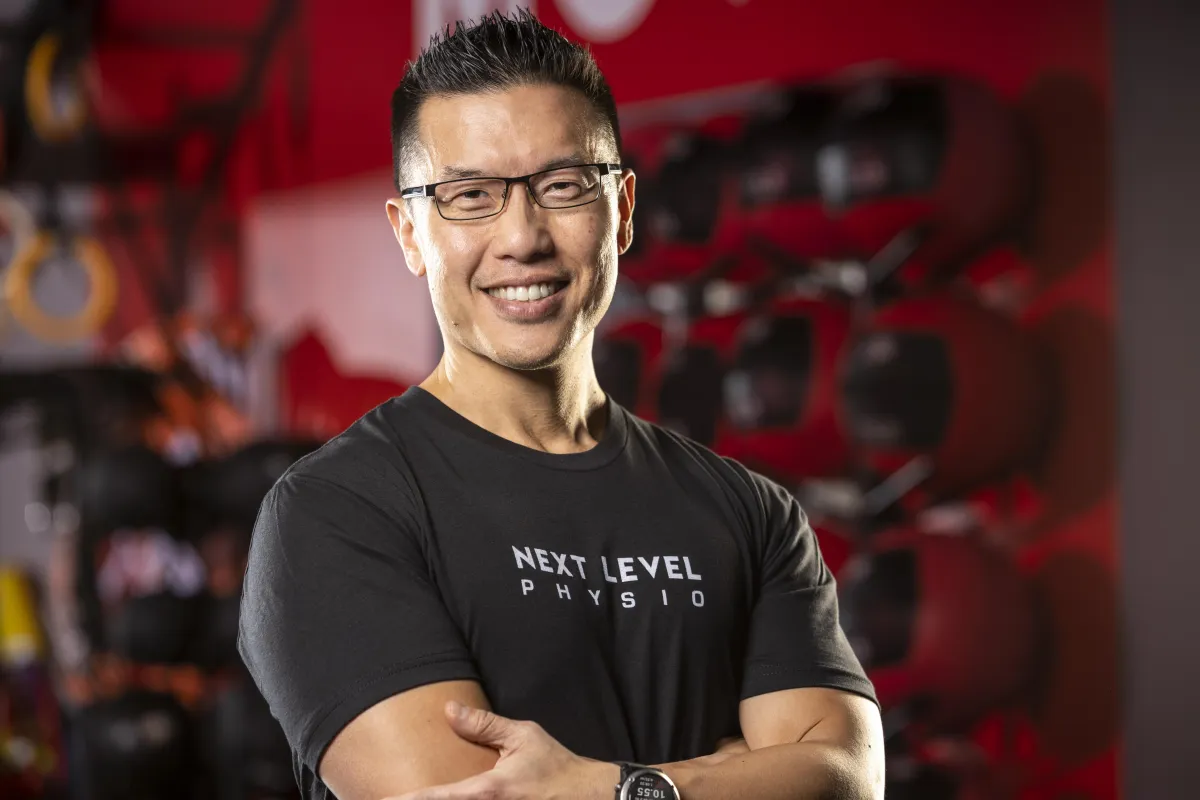
Post Address and Mail
Email: info@nlphysio.com
Address
1055 Darrington Drive
Cary, NC 27513
Get In Touch
Hours
Mon - Fri: 7 am- 6:00 pm
Sat: 8:00 am - 12:00 pm
Sun: By Appointment Only
Phone Number:
919-650-4633
Office: 1055 Darrington Drive
Cary, NC 27513
Call 919-650-4633
Email:info@nlphysio.com
Site: www.nlphysio.com

